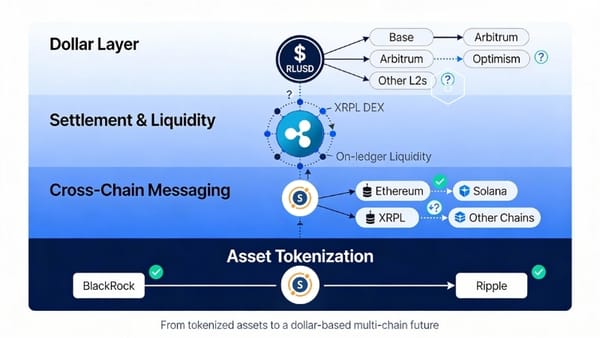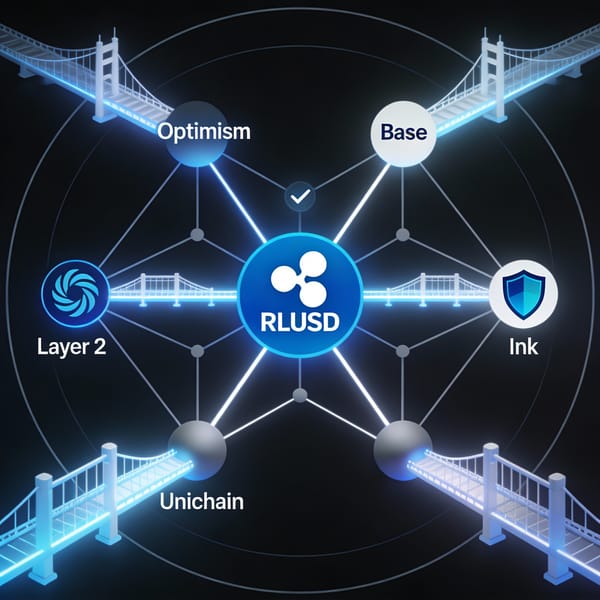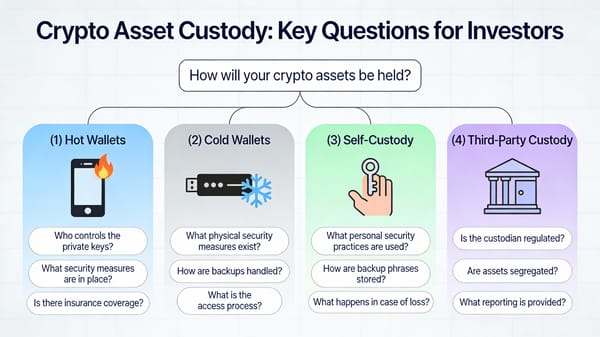RealFI Unlocks $650 Trillion Real Estate Market with XRP Platform Launch
RealFI officially launched its real estate tokenization platform on the XRP Ledger on August 3, 2025, targeting the massive $650 trillion global real estate market by enabling fractional property investments through REAL and XRP tokens.

Bottom Line Up Front: RealFI officially launched its real estate tokenization platform on the XRP Ledger on August 3, 2025, targeting the massive $650 trillion global real estate market by enabling fractional property investments through REAL and XRP tokens. This development positions XRP at the forefront of real-world asset tokenization, potentially driving significant adoption and liquidity for the cryptocurrency.
Revolutionary Platform Goes Live
RealFI has launched a real estate tokenization platform on the XRP Ledger, marking a significant step in integrating blockchain technology with tangible assets. The platform addresses one of the most pressing challenges in real estate investment: accessibility and liquidity in a traditionally illiquid market.
The platform tokenizes real estate with the use of REAL and XRP tokens, allowing people to buy tokenized real estate directly on blockchain. This innovation enables both small retail investors and large institutions to participate in fractional real estate ownership, potentially democratizing access to one of the world's largest asset classes.
XRP Ledger: The Technical Foundation
At the core of RealFI's platform is the XRP Ledger, known for its fast transaction speeds, low costs, and strong security features. These characteristics are critical for handling large-scale tokenized assets, with over 63 million ledgers currently validating the system, providing a high level of trust for investors.
The choice of XRP Ledger wasn't arbitrary. The XRP Ledger acts to transact with no network clog and very fast speed, giving an advantage to fractional ownership and digitalized property records across the world. These technical capabilities make XRPL ideal for the complex requirements of real estate tokenization, where speed, cost-efficiency, and security are paramount.
Market Context and Regulatory Landscape
The real estate tokenization market is experiencing unprecedented growth. Security Token Market predicts that tokenized real estate will achieve a market cap of $1.4 trillion by 2025. However, this explosive growth comes with significant regulatory challenges.
Real estate tokenization market will surge from $3.5 billion in 2024 to $19.4 billion by 2033, with a remarkable 21% yearly growth. Despite this promising trajectory, regulatory uncertainty is one of the biggest risks for real estate tokenization companies, with the lack of clear regulatory frameworks creating major compliance challenges.
The regulatory environment varies significantly across jurisdictions. According to EY's survey, 72% of institutional investors and 62% of high-net-worth investors see regulatory uncertainty as a significant barrier to adopting tokenization. This highlights the importance of platforms like RealFI operating within compliant frameworks while pushing the boundaries of innovation.
Real-World Validation Through Dubai Initiative
RealFI's launch comes amid broader institutional adoption of real estate tokenization on XRP Ledger. Dubai government agency debuted its first real estate tokenization platform, teaming up with real estate fintech Prypco and infrastructure provider Ctrl Alt. The Prypco Mint platform tokenizes title deeds on the XRP Ledger, syncing with official property records.
This government-backed initiative demonstrates the credibility and technical viability of real estate tokenization on XRPL. The agency projected that tokenized real estate could account for 7%, roughly $16 billion, of the city's total property transactions by 2033.
XRP/Ripple Analysis: Tokenization as a Growth Driver
Price Impact and Market Positioning
The launch of platforms like RealFI could significantly impact XRP's utility and price dynamics. A report from Ripple and the Boston Consulting Group (BCG) revealed that the real-world assets tokenization market stood at a $600 billion valuation in April 2025, and could hit $18.9 trillion in 2033.
For XRP to provide sufficient liquidity for a $30 trillion market, its valuation would have to increase substantially. This creates a compelling investment thesis for XRP holders, as widespread adoption of tokenization platforms could drive demand for the cryptocurrency as a bridge asset.
Institutional Adoption Prospects
RealFI's business model aligns with Ripple's broader strategy of institutional adoption. RealFI partners with real estate developers to tokenize and list properties globally, significantly reducing entry barriers for investors. Smart contracts automate compliance and property transfer procedures, minimizing reliance on intermediaries and reducing administrative costs.
This approach mirrors successful institutional partnerships in Ripple's existing payment network, suggesting a proven path to enterprise adoption in the tokenization sector.
Legal Standing and Partnership Opportunities
With the ongoing Ripple-SEC case nearing resolution, platforms like RealFI provide practical use cases that demonstrate XRP's utility beyond speculative trading. In July 2023, a significant ruling stated that while sales of XRP to institutions were unregistered securities, sales to regular investors were not. In August 2024, Ripple was fined $125 million, which was much lower than the nearly $2 billion the SEC requested.
This regulatory clarity, combined with real-world applications like RealFI, strengthens XRP's position as a legitimate utility token rather than a speculative security.
Adoption and Scalability Potential
The XRP Ledger's capabilities for RWA tokenization are setting a new standard for institutional DeFi, offering a flexible and secure platform for the tokenization of real-world assets. RealFI's platform leverages these native capabilities, avoiding the complexity and gas fees associated with smart contract-based solutions on other blockchains.
The scalability advantages are significant. The tokenized real-world asset (RWA) market grew from $8.6 billion to more than $23 billion in the first half of 2025 alone, a 260% rise. XRP Ledger's ability to handle this growth efficiently positions it as a preferred platform for tokenization projects.
Market Implications and Future Outlook
The success of RealFI and similar platforms could catalyze broader adoption of blockchain technology in traditional finance. Layer-2 solutions refer to infrastructure built on top of an existing layer-1 blockchain that can execute transactions off-chain with improved speed of transaction at lower costs with more affordable participation in blockchain networks.
However, XRP Ledger's native efficiency means tokenization platforms like RealFI can operate directly on the main network without requiring additional layers, providing a competitive advantage in terms of simplicity and cost-effectiveness.
Industry experts are optimistic about the long-term potential. By 2030, the global market for tokenized real estate will reach $3 trillion and represent 15% of the real estate AUM, ScienceSoft's research team predicts. If platforms like RealFI capture even a small percentage of this market, the implications for XRP adoption and price could be substantial.
Key Takeaways
RealFI's launch represents more than just another tokenization platform—it's a proof-of-concept for XRP Ledger's ability to handle real-world asset tokenization at scale. The platform's focus on the massive real estate market, combined with XRPL's technical advantages, creates a compelling case for broader institutional adoption.
While regulatory challenges remain, the backing of government initiatives like Dubai's tokenization program and the growing institutional interest in blockchain-based real estate solutions suggest that platforms like RealFI are positioned for significant growth. For XRP holders and the broader cryptocurrency market, this development represents a tangible step toward mainstream blockchain adoption beyond speculative trading.
The success of RealFI will ultimately depend on regulatory clarity, institutional adoption, and the platform's ability to deliver on its ambitious goal of bringing the $650 trillion real estate market on-chain. However, the foundation is strong, and the potential impact on XRP's utility and value proposition is substantial.
DISCLAIMER: This newsletter is for informational purposes only and does not constitute investment advice or a recommendation to buy, sell, or hold any securities. Investments in cryptocurrencies or other financial assets carry significant risks, including the potential for total loss, extreme volatility, and regulatory uncertainty. Past performance is not indicative of future results. Always consult a qualified financial professional and conduct thorough research before making any investment decisions.



